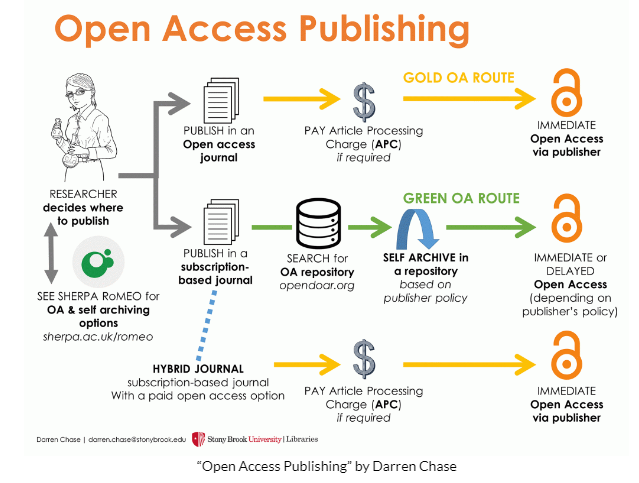Open Access Publishing in UT
NEW! Agreements with publishers that provide waived or discounted APCs for Open Access
In some cases, the costs of OA publishing can be covered through the so-called transformative agreement (Pay and Publish model), which is signed between a research publisher and a research institution. The agreements vary between publishers, some have uncapped publishing and others allow for a certain number of outputs. The APCs (Article Processing Charges) payable in these agreements are covered by library services journal subscription payments to specific publishers.
In Estonia, access to research databases and publishers' e-journal packages is collectively obtained through the ELNET Consortium. Recently the transformative agreements have been established with the following publishers:
- Starting from 2024, according to the agreement with the American Chemical Society, OA publishing is free of charge for UT researchers (corresponding authors) in all e-journals.
- Through the international consortium EIFL (Electronic Information for Libraries), where information about discounted publication fees for various research journals (incl Brill, IWA Publishing, Taylor & Francis, World Scientific) can be found on their website (under the "Download" button).
- Agreement with Cambridge University Press, based on which UT researchers do not have to pay for OA publishing.
- Agreement with SAGE allows to publish OA articles for free in Sage Choice hybrid journals. However, fully open access journals from SAGE offer a 20% discount to UT authors (corresponding author).
- In the Royal Society of Chemistry (RSC) hybrid journals, UT author can publish up to 7 articles with free OA in 2023. The condition is that the UT author must be the corresponding author and in order for the publisher to recognize them automatically, they must use an e-mail address with the domain ut.ee.
General information
Many research funders require the Open Access publishing of research articles (e.g., the requirements by the European Commission’s Horizon 2020). There are three acceptable ways for meeting these requirements:
1. Self-archiving (Green Open Access) – making the article accessible in a repository of your choice:
- institutional repository (e.g., the UT Digital Archive DSpace)
- domain-specific repository (e.g., Europe PubMed Central)
- multidisciplinary repository (e.g., Zenodo)
As a rule, commercial publishers allow the archiving of a pre-print or post-print manuscript in parallel with its publication in a journal; however, the conditions for archiving have to be checked and a possible embargo should be followed.
Check the conditions:
- Sherpa/RoMEO – check publisher conditions for parallel publishing
- Sherpa/Juliet – check research funders’ open access policies
- Major publishers’ rules for Open Access publishing
2. Publishing in an OA journal (Gold Open Access). For the APC-Article Processing Charge, a peer-reviewed article is made immediately accessible for all free of charge in an Open Access journal via the publisher’s web page. The background of open access journals has, when possible, always to be carefully checked, as the so-called predatory publishers also use the principles of OA publishing.
Check the background of journals and the possibilities for publishing by using:
- Register of peer-reviewed OA journals DOAJ
- Recognised platform Think.Check.Submit
3. Publishing in a Hybrid Open Access journal. An article is immediately made openly accessible in a journal with a licence agreement. Recognised commercial publishers also allow open access publishing, but require that the authors pay the publication fee (APC of about 3000€). With this publishing model, the taxpayers’ money is spent twice – for the subscription for access to the publication, and for publishing in the journal, paid from the grant or project finances. Depending on the conditions of the licence agreement, the publisher may reduce the OA publication fees. Archiving of the manuscript in a repository – Green OA – is also allowed as a rule.

The following OA publishing platforms can be used at the University of Tartu:
